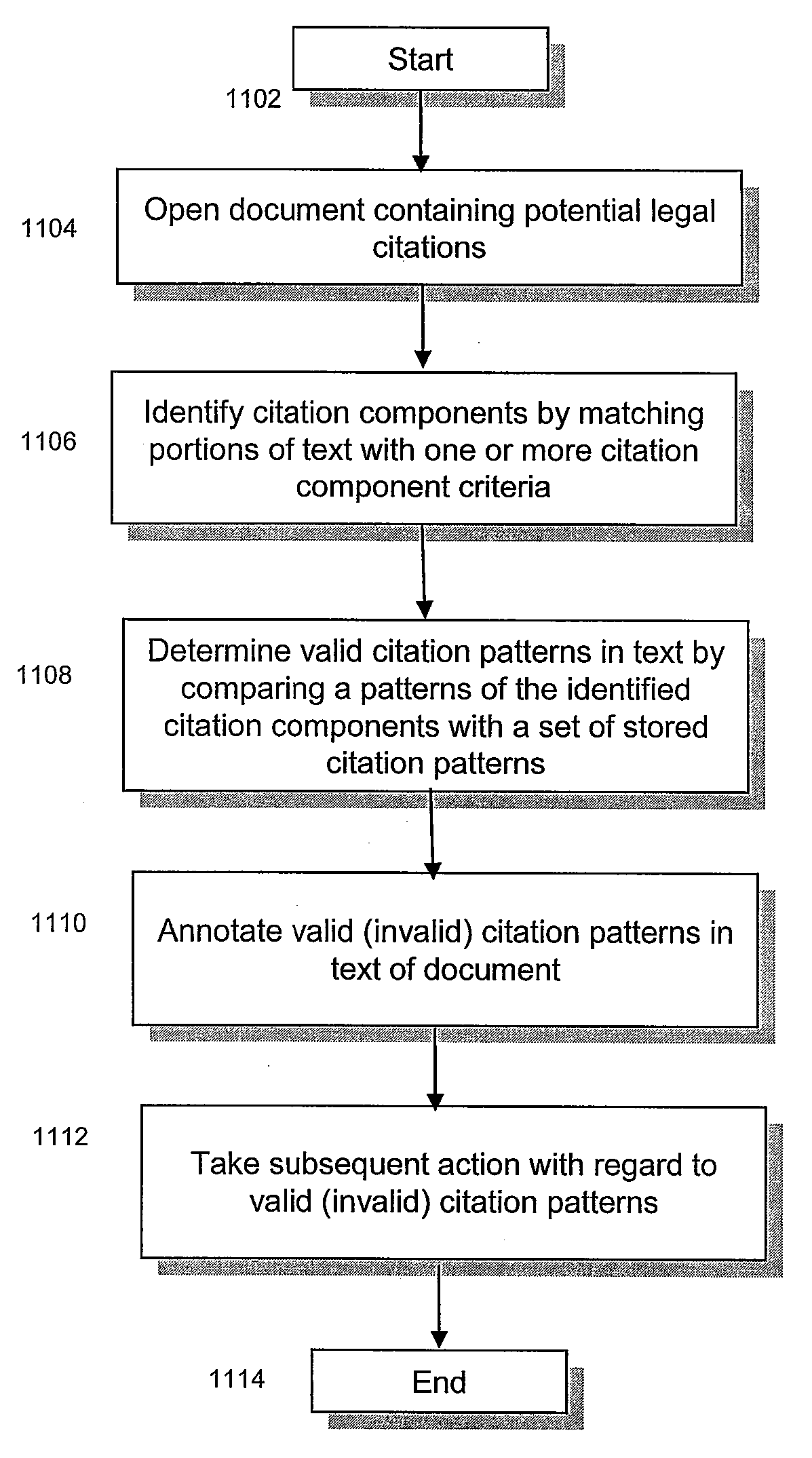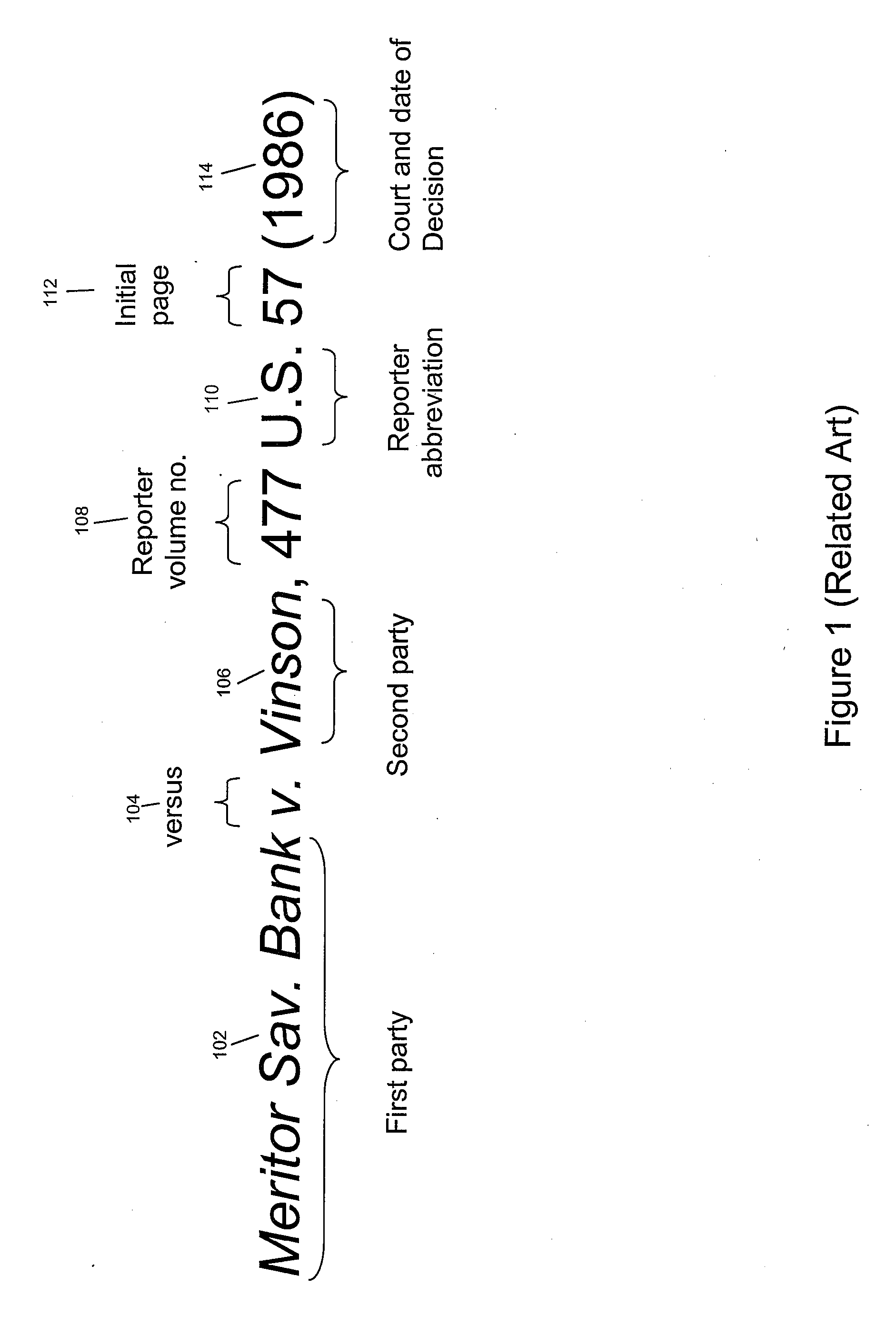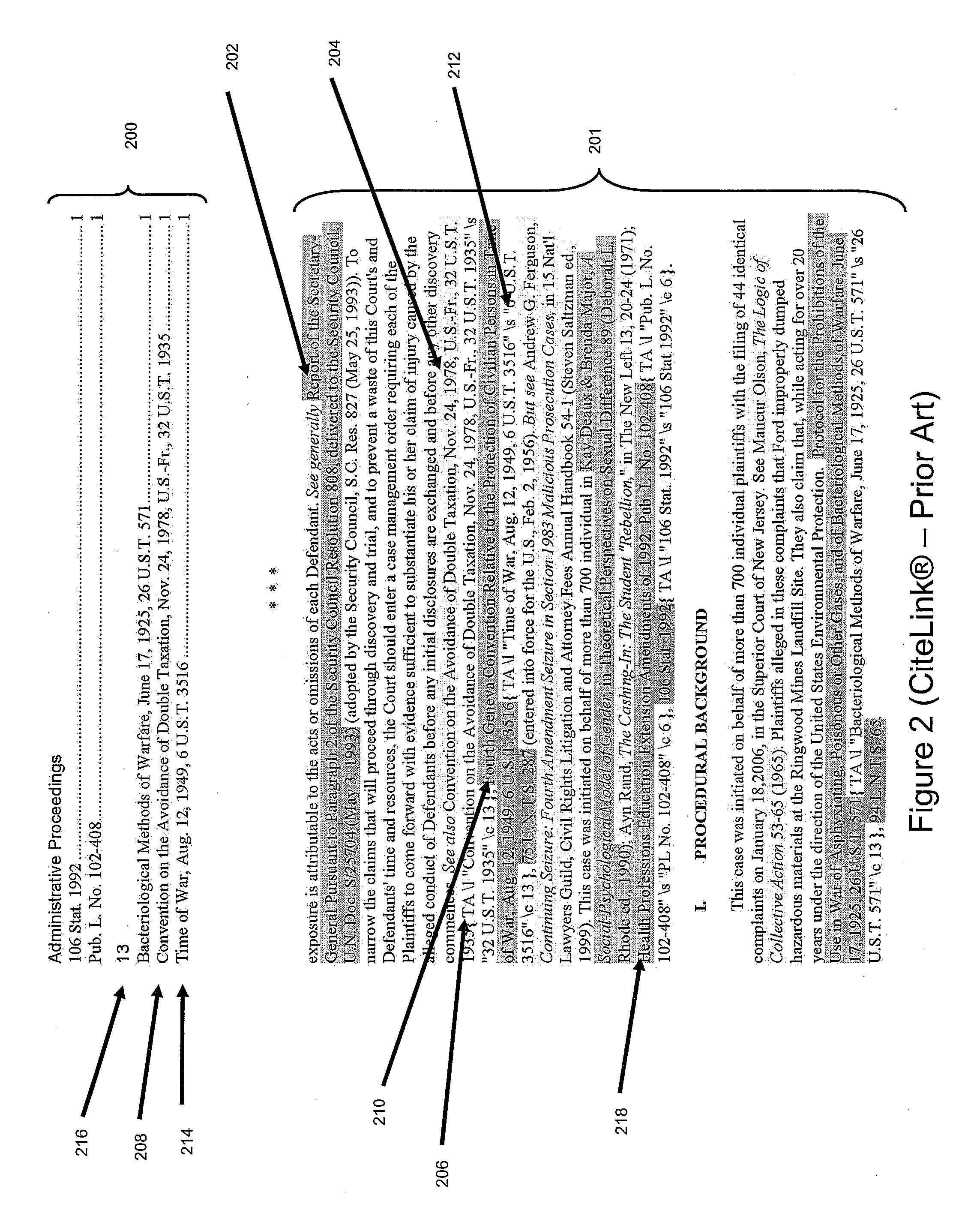System and method for determining valid citation patterns in electronic documents
a technology of valid citation and electronic documents, applied in the field of system and method for determining valid citation patterns in electronic documents, can solve the problems of difficult maintenance, long key-word search algorithm, time-consuming and error-prone processes,
- Summary
- Abstract
- Description
- Claims
- Application Information
AI Technical Summary
Benefits of technology
Problems solved by technology
Method used
Image
Examples
Embodiment Construction
[0050]According to an aspect of the invention, and with reference to FIG. 5, an exemplary system architecture 500 will first be described. In one implementation, a user may create, access, manipulate, or store one or more documents of varying file type via a computer 502. Computer 502 may comprise, but is not limited to, a desktop computer, portable computer (e.g., a laptop computer), Personal Digital Assistant (PDA), network-enabled appliance, or other device. According to one aspect of the invention, a software application 700 may be provided for determining valid citation patterns in electronic documents, which may be executed by a processor of computer 502.
[0051]In one implementation, and with reference to FIG. 6, computer 502 may comprise a processor 610, interfaces 620, memory 630, and storage devices 640 which are electrically coupled via bus 650. Memory 630 may comprise random access memory (RAM), read only memory (ROM), flash memory, or other memory, and may store computer-...
PUM
 Login to View More
Login to View More Abstract
Description
Claims
Application Information
 Login to View More
Login to View More - R&D
- Intellectual Property
- Life Sciences
- Materials
- Tech Scout
- Unparalleled Data Quality
- Higher Quality Content
- 60% Fewer Hallucinations
Browse by: Latest US Patents, China's latest patents, Technical Efficacy Thesaurus, Application Domain, Technology Topic, Popular Technical Reports.
© 2025 PatSnap. All rights reserved.Legal|Privacy policy|Modern Slavery Act Transparency Statement|Sitemap|About US| Contact US: help@patsnap.com



